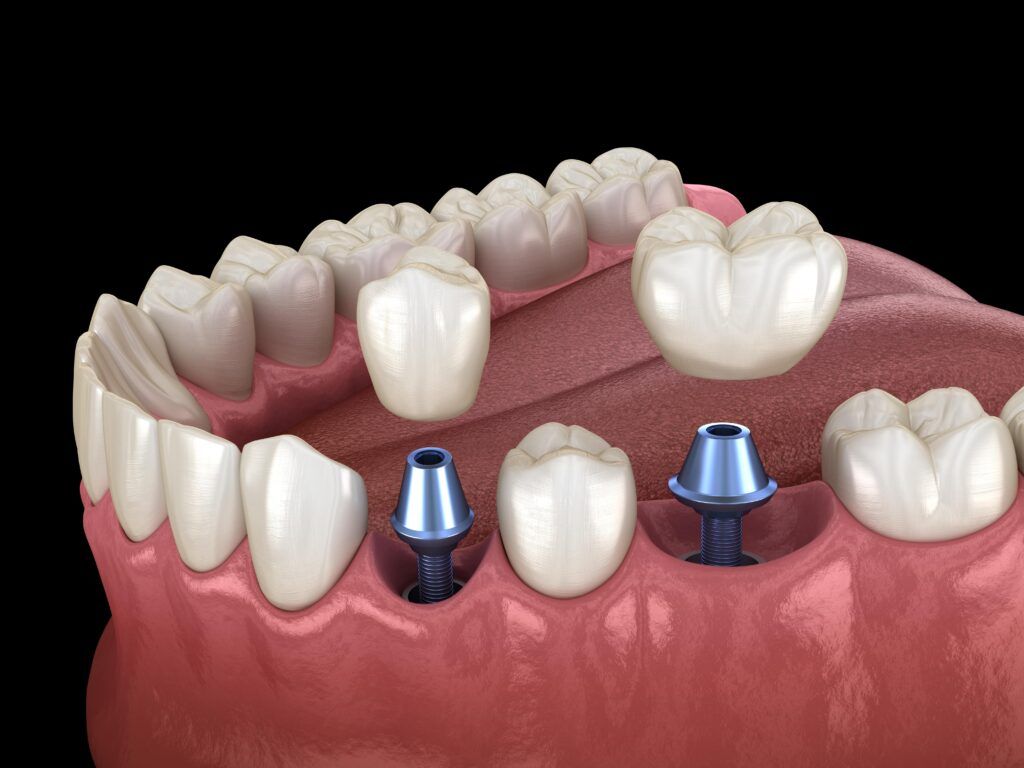Dental implants have revolutionized the way we approach tooth loss. They not only restore the function and aesthetics of natural teeth but also help preserve oral health in the long run. A dental implant is typically composed of three parts: the implant post, the abutment, and the prosthetic tooth. Today, we’re diving into the critical but often overlooked component of this trio: the abutment.
What is a Dental Implant Abutment?

An abutment serves as the connecting element between the implant post that is securely anchored in the jawbone and the visible replacement tooth or teeth. Its primary role is to provide a stable and secure base for the implant crown, bridge, or denture.
Abutments are manufactured from a variety of materials and are designed differently based on their intended function, material compatibility, aesthetic requirements, and the implant system used. Let’s explore the main types of dental implant abutments and their specific uses.
Abutments at a Glance
| Abutment Type | Description | Common Uses |
| Stock Abutments | Pre-fabricated abutments that come in a range of standard sizes and shapes. | Suitable for situations with a less critical aesthetic demand, like posterior placements where the gum tissue is more forgiving. |
| Custom Abutments | Tailor-made for the patient, taking into account the specific shape of their gum tissue and the alignment of surrounding teeth. | Used when an exact match to a patient’s dental anatomy is needed for optimal aesthetics and function, such as with front teeth replacements. |
| Healing Abutments | Temporary abutments placed to aid the gum tissue in healing around the implant, setting the stage for the permanent abutment. | Employed directly after implant placement, to shape the gum tissue and make it ready for the final prosthetic work. |
| Angled Abutments | Designed to adjust the angle of the prosthetic tooth when the implant is not placed in the perfect upright position. | Used when dental implants have been inserted at an angle due to bone quantity, location, or other anatomical considerations. |
| Zirconia Abutments | Made from zirconium dioxide, offering a color more similar to natural teeth, with excellent biocompatibility. | Preferred in the anterior region for aesthetic purposes, especially when the patient has thin gum tissue that might otherwise show a metal abutment through. |
| Titanium Abutments | Constructed from titanium, known for its strength and durability, and commonly used in medical implants. | Frequently used for molar implant restorations where the force of chewing is strongest and cosmetic appearance is of less concern. |
Stock Abutments
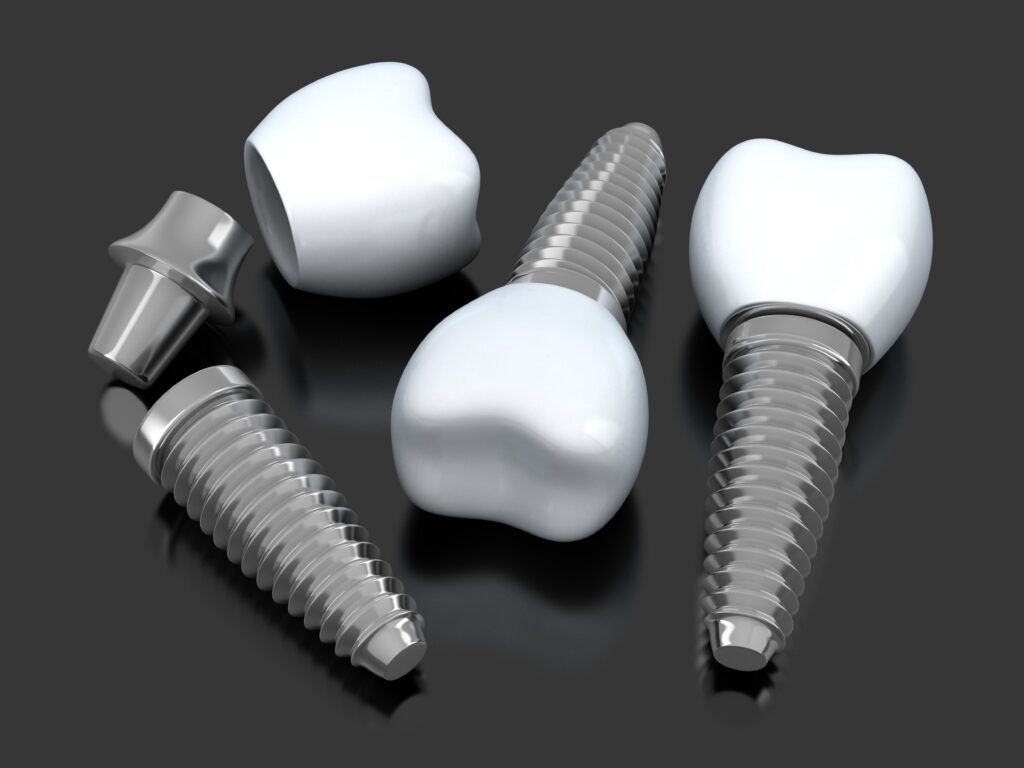
These are pre-manufactured abutments available in various shapes and sizes. They are the “off-the-shelf” option for dental implant restorations, which provide a cost-effective and time-efficient solution. However, because they’re not customized for individual patients, there may be compromises in terms of fit and aesthetics. They are generally used when the implant is placed in a location with ample soft tissue coverage and less esthetic concern, such as the posterior regions of the mouth.
Pros:
- Cost-Effective: Pre-manufactured, making them more affordable than custom options.
- Readily Available: Can be used immediately without the wait time required for custom fabrication.
- Variety: Come in various shapes and sizes, which can accommodate many clinical situations.
Cons:
- Fit Issues: May not provide the optimal fit for all patients, which can affect both function and aesthetics.
- Limited Customization: Less able to accommodate unique dental anatomy or cosmetic needs.
- Potential for Compromise: Aesthetic outcomes might be compromised, especially if used in the anterior (front) part of the mouth.
Custom Abutments
Custom abutments are individually crafted to fit the unique contour of a patient’s gums and adjacent teeth. They are usually made after taking an impression of the implant and the surrounding tissue, ensuring a precise fit. This customization can lead to better aesthetic outcomes, especially in the anterior or visible areas of the mouth. The ability to tailor the emergence profile—the way the abutment comes out through the gums—can also promote better oral hygiene by facilitating easier cleaning around the base of the crown.
Pros:
- Personalized Fit: Tailored to the patient’s mouth for a precise fit, supporting better overall function and aesthetics.
- Improved Comfort: Can be designed to match the contours of the gums and the bite more naturally.
- Aesthetic Advantage: Especially beneficial in visible areas for creating a more natural-looking emergence profile.
Cons:
- Cost: More expensive than stock abutments due to the customization process.
- Production Time: Take longer to fabricate, which can extend the overall treatment timeline.
- Labor Intensive: Require a more detailed design and manufacturing process.
Healing Abutments
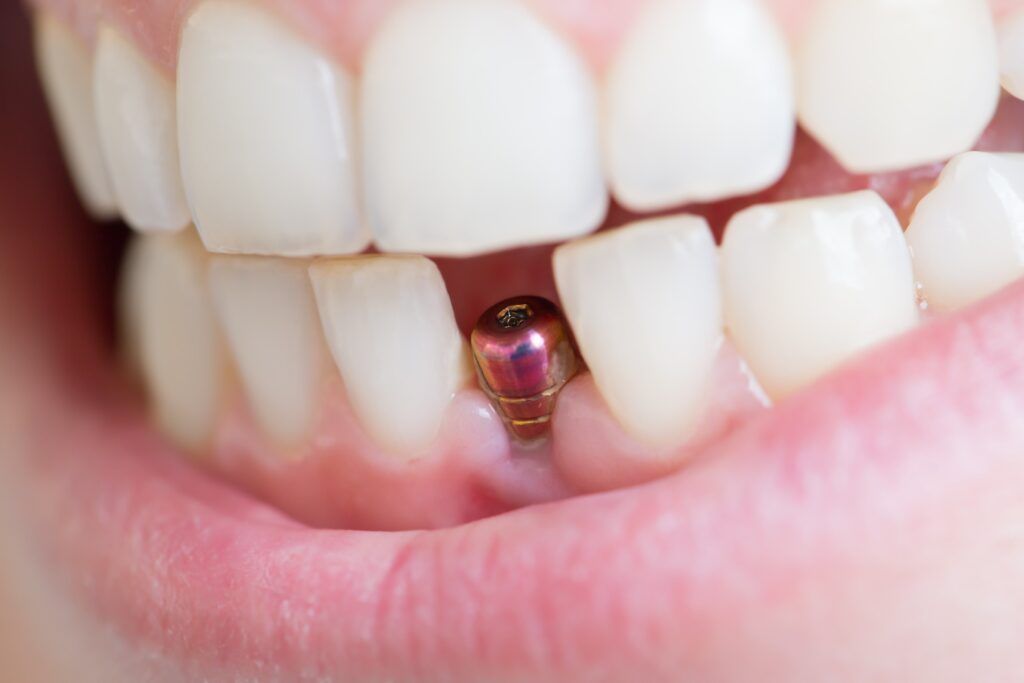
Healing abutments, also known as healing caps, play a role immediately after the implant surgery. They help shape and maintain the gum tissue around the implant site during the healing phase. Once the site is healed, the permanent abutment replaces the healing cap.
Pros:
- Gum Shaping: Help the gum tissue heal properly around the future site of the final abutment, promoting a healthier final result.
- Facilitates Integration: Allows for undisturbed healing of the bone to the implant.
Cons:
- Additional Procedure: Their use necessitates a subsequent procedure to replace them with permanent abutments.
Angled Abutments
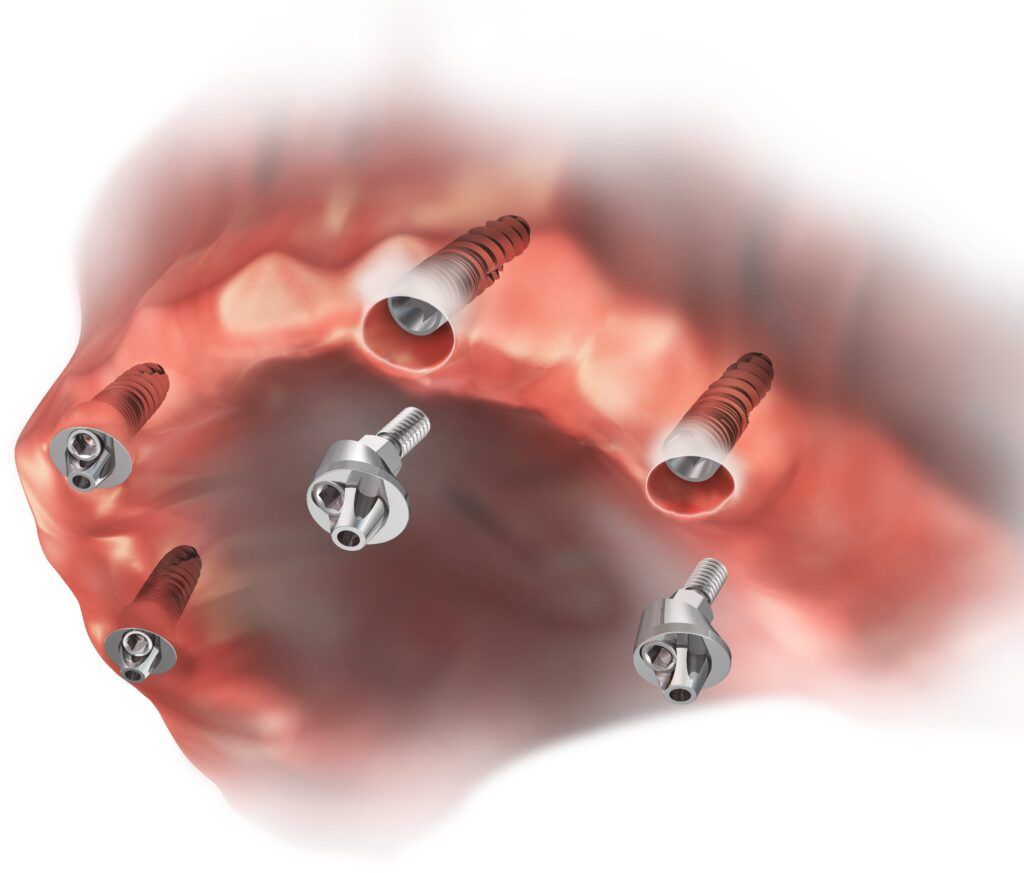
Angled or angled correction abutments are used when an implant is placed in an area with an inadequate bone or is not in the ideal angulation due to anatomical constraints. These abutments can correct the angle by up to 45 degrees, which enables the prosthetic tooth to be aligned properly with the rest of the teeth, ensuring functionality and a natural appearance.
Pros:
- Correct Misalignment: Enable proper restoration even when implants are not placed in the ideal position.
- Versatility: Can be a solution for anatomical challenges without additional grafting or surgery.
Cons:
- Complexity: May require more planning and adjustment to ensure proper fit and function.
- Limited Use: Not necessary or suitable for all implant placements, so their use is specific to certain cases.
Zirconia Abutments
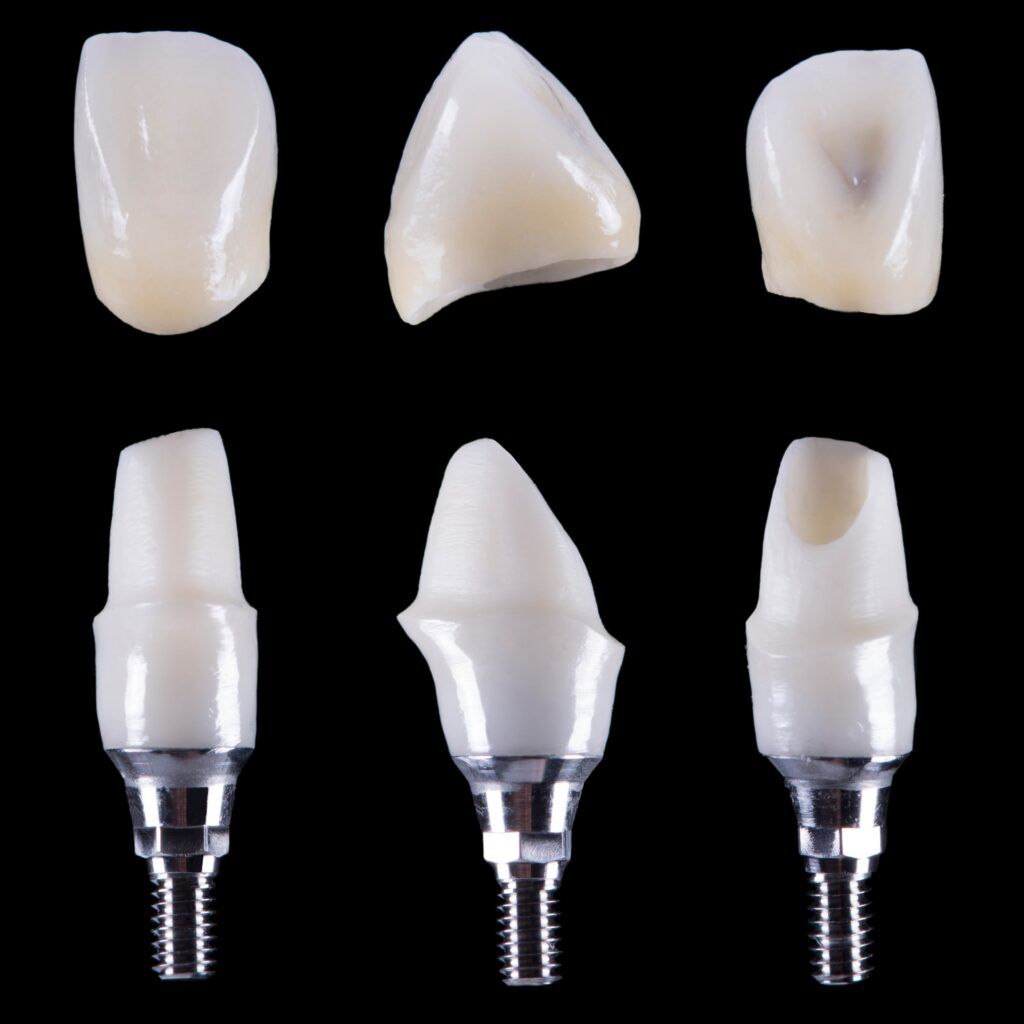
Zirconia abutments are chosen for their aesthetic qualities, as zirconia has a tooth-like color that blends with the natural dentition. These are particularly useful for front-tooth replacements where metal abutments might show through thin gum tissue. Zirconia is also biocompatible and resists plaque buildup, making it an excellent choice for patients concerned with gum health and appearance.
Pros:
- Excellent Aesthetics: Provide a natural tooth color that is preferable for front tooth replacements.
- Biocompatibility: Zirconia is hypoallergenic and has a low plaque affinity.
- Stability in the Mouth: Do not corrode and maintain their color over time.
Cons:
- Fracture Risk: While strong, zirconia is more brittle than metal and can be prone to chipping or fracturing.
- Cost: More expensive than titanium abutments.
Titanium Abutments
Titanium is a popular material for abutments due to its strength, biocompatibility, and ability to integrate with bone. It’s typically used in the back of the mouth where the forces from chewing are greatest, and the need for cosmetic appeal is less pressing. Titanium abutments are also less expensive than zirconia and can be used in both stock and custom forms.
Pros:
- Durability: Known for their strength and long-term success rates.
- Biocompatibility: Titanium integrates well with bone and tissue.
- Cost-Effective: Generally less expensive than zirconia or custom-made abutments.
Cons:
- Aesthetic Limitations: Metal color may show through thin gums or in patients with high smile lines.
- Thermal Conductivity: Titanium conducts temperature, which may be uncomfortable for some patients.
Selecting the Right Abutment
The choice of abutment is a critical decision in the dental implant process and involves consideration of several factors:
- Aesthetic requirements: The front teeth, due to their visibility, may require zirconia or custom abutments for a more natural look.
- Functional demands: Molars endure more force, which might necessitate the use of durable materials like titanium.
- Anatomical conditions: When natural bone anatomy is compromised, angled abutments may be necessary to achieve proper alignment.
- Patient health and preferences: Biocompatibility, allergy concerns, and personal preferences are also considered when choosing abutment materials.
Conclusion
Dental implant abutments are essential for a successful and long-lasting implant. They not only serve as a bridge between the implant and the crown but also influence the overall health of the surrounding tissue and integration with the bone. As dental technology advances, we may see even more innovative solutions for personalized dental care that will continue to improve the quality of life for patients with missing teeth.

